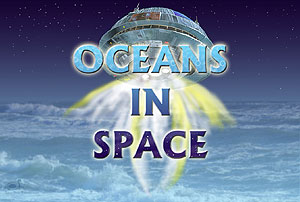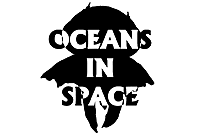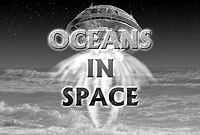Oceans In Space
The search for life in the universe begins deep in Earth's oceans — and extends out to the stars!
Two of the most profound questions humans can ask are "Where do we come from?" and "Are we alone?" It is only natural that we look across the gulfs of space to search for other inhabited worlds.
Oceans In Space is a journey of exploration that seeks out places where conditions are favorable for life to exist. This original and thought-provoking presentation highlights the search for extrasolar planets and an understanding of the conditions necessary to form and sustain life. Inspired in part by the goals of NASA's Origins Program — an effort to answer the enduring questions that spur space exploration — this program introduces audiences to the diversity of life on our home planet even as humans embark on the search for life in the universe.
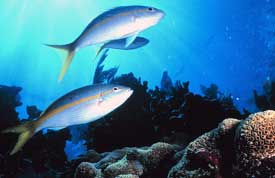 The show travels back in time more than five billion years, to trace the origin and evolution of the solar system from a cloud of gas and dust. It then describes the formation of our planet's oceans, and speculates about the places where life could have begun nearly four billion years ago. It presents the three requirements for the nourishment of life on Earth — and most likely anywhere else in the universe: warmth, water, and organic material.
The show travels back in time more than five billion years, to trace the origin and evolution of the solar system from a cloud of gas and dust. It then describes the formation of our planet's oceans, and speculates about the places where life could have begun nearly four billion years ago. It presents the three requirements for the nourishment of life on Earth — and most likely anywhere else in the universe: warmth, water, and organic material.
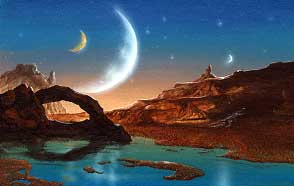 Today life on Earth flourishes in environments ranging from benign to downright alien, and the show examines the variety of lifeforms that populate our planet: from the creatures of the land, to organisms that exist in the extreme conditions around volcanic vents on the ocean floors. The possibility that life might exist in similar extreme environments elsewhere in the solar system prompts an exploration of two other worlds where the requirements for life might be met: Mars and the icy Jovian moon Europa.
Today life on Earth flourishes in environments ranging from benign to downright alien, and the show examines the variety of lifeforms that populate our planet: from the creatures of the land, to organisms that exist in the extreme conditions around volcanic vents on the ocean floors. The possibility that life might exist in similar extreme environments elsewhere in the solar system prompts an exploration of two other worlds where the requirements for life might be met: Mars and the icy Jovian moon Europa.
The search for other life-bearing planets moves to starbirth nurseries in the Orion Nebula. Other stars provide harbor for planets, and the program illustrates one technique today's scientists use to look for extrasolar planets. A science fiction-style ending portrays spaceship crews exploring the shores of an alien ocean far from Earth, in a scene taken from humanity's distant future.

Running time: 30:00
Age level: General public
Year of production: 1996
Narrated by Avery Brooks
Words expertly crafted by Carolyn Collins Petersen
Stereo soundtrack with original music by Geodesium
Commissioned by the Springfield Library and Museums Association
for the Seymour Planetarium of Springfield, Massachusetts.
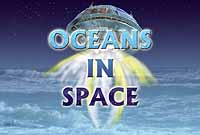 Oceans in Space provides an educational focus on the search for extrasolar planets and life in the universe via a set of multidisciplinary themes woven throughout the program that help relate the information presented in the show to the lives of students, families, and the general public. The show was created for general public audiences and students grades 4-12.
Oceans in Space provides an educational focus on the search for extrasolar planets and life in the universe via a set of multidisciplinary themes woven throughout the program that help relate the information presented in the show to the lives of students, families, and the general public. The show was created for general public audiences and students grades 4-12.
Earth and Space sciences:
- the origin and evolution of the solar system
- characteristics of Earth
- characteristics of Mars; evolution of Mars surface
- comparative planetology between Earth, Mars, and Europa
- Earth's oceans, their formation and effect on life, climate, and geological processes
- Martian meteorite analyses
- characteristics of Europa
- the formation of other stars and planetary systems
- the detection of planetary systems around other stars
Life sciences:
- the evolution of primordial life
- organisms and their environments on Earth
- the search for similar environments elsewhere
- requirements to sustain life (water, warmth, organic material)
Science as a human endeavor:
- exploring the undersea environment with specialized probes
- exploring Mars with telescopes and spacecraft
- exploring Europa with spacecraft
- exploring space with Hubble Space Telescope
- future missions to other planets to search for life
Select a link to preview the trailer.
Shows from Loch Ness Productions come with English language soundtracks standard. Translated soundtracks are provided as additional items, not substitutes for the English ones.
Don't see the language you want? Let's work together to create it. Read more here!



